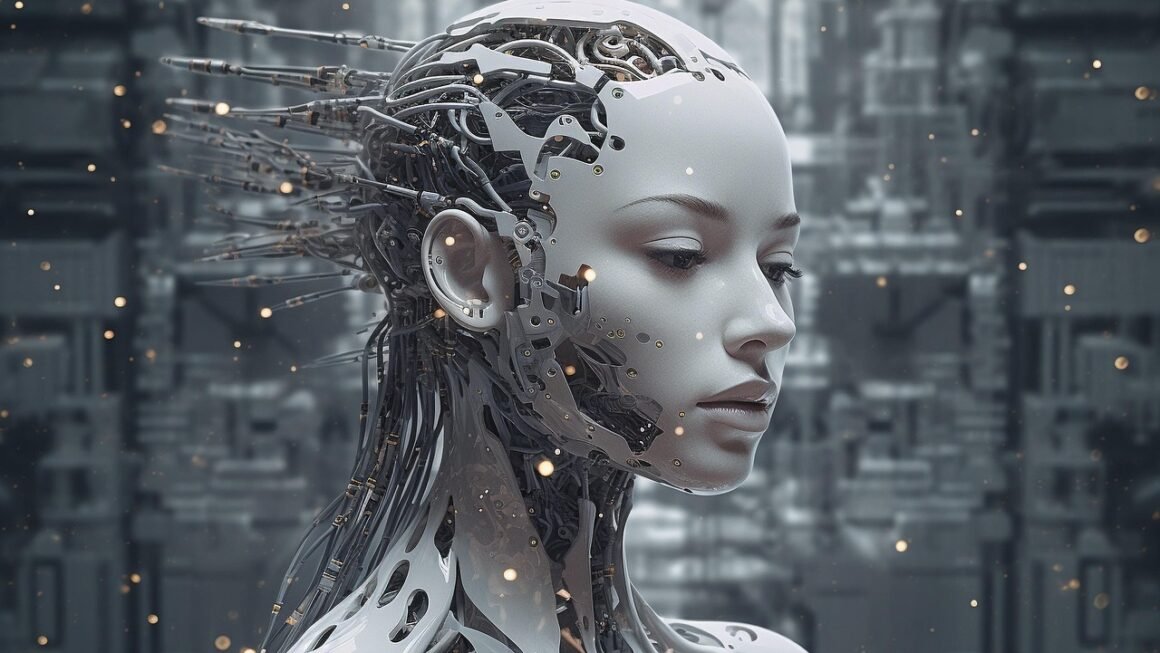Imagine a world where your devices anticipate your needs, understand your preferences, and proactively improve your life. This isn’t science fiction; it’s the reality of AI-enabled devices. From smartphones that learn your daily routines to smart home systems that optimize energy consumption, artificial intelligence is rapidly transforming the way we interact with technology. This blog post explores the exciting landscape of AI-enabled devices, diving into their functionality, benefits, and potential impact on our lives.
What are AI-Enabled Devices?
AI-enabled devices are electronic devices that incorporate artificial intelligence to perform tasks that typically require human intelligence. These devices utilize machine learning, natural language processing (NLP), and other AI techniques to analyze data, learn from experience, and make intelligent decisions. They go beyond simple automation, adapting to user behavior and improving their performance over time.
Key Components of AI Integration
- Sensors: These devices rely on sensors to gather data about their environment, including cameras, microphones, and other specialized sensors.
- Processors: Powerful processors are crucial for running complex AI algorithms and processing large amounts of data.
- AI Algorithms: Machine learning models, NLP engines, and other AI algorithms are the brains of these devices, enabling them to understand and respond to inputs.
- Connectivity: Many AI-enabled devices utilize internet connectivity for data sharing, updates, and remote control.
Distinguishing AI from Traditional Automation
While traditional automation follows pre-programmed instructions, AI-enabled devices learn and adapt. For example, a regular thermostat can be programmed to turn on at a specific time. An AI-powered smart thermostat, however, learns your heating and cooling preferences, considers factors like weather forecasts, and optimizes energy usage accordingly – saving you money and increasing comfort without manual intervention.
The Power of AI in Everyday Devices
AI is revolutionizing everyday devices, enhancing their capabilities and creating more personalized user experiences. Here are a few examples:
Smartphones and Personal Assistants
- Intelligent Assistants: Siri, Google Assistant, and Alexa are integrated into smartphones, allowing users to control devices, get information, and manage tasks using voice commands. These assistants leverage NLP to understand natural language and learn user preferences over time.
- Enhanced Camera Capabilities: AI algorithms improve image processing, enabling features like automatic scene detection, portrait mode, and object recognition. For instance, your smartphone camera can automatically adjust settings based on whether you’re photographing a landscape or a person.
- Predictive Text and Keyboard: AI algorithms analyze your typing patterns and predict the next word, making texting faster and more accurate.
Smart Home Devices
- Smart Speakers: Speakers like Amazon Echo and Google Home provide voice control over smart home devices, allowing you to manage lights, thermostats, and appliances. They can also play music, set alarms, and answer questions.
- Smart Thermostats: Devices like Nest learn your heating and cooling preferences and adjust the temperature automatically, saving energy and improving comfort. Studies have shown that smart thermostats can reduce energy consumption by 10-12%.
- Smart Security Systems: AI-powered security cameras can distinguish between people, animals, and vehicles, reducing false alarms and providing more reliable security. They can also learn to recognize familiar faces and notify you when strangers approach your property.
- Smart Lighting: Automatically adjusts to brightness levels based on occupancy, ambient light, and time of day, saving electricity and extending the life of bulbs.
Wearable Technology
- Fitness Trackers: AI algorithms analyze data from fitness trackers to provide personalized insights into your activity levels, sleep patterns, and overall health. They can also provide customized workout recommendations.
- Smartwatches: AI-powered smartwatches can monitor your heart rate, detect falls, and even alert emergency services if needed. This is particularly valuable for elderly individuals or those with health conditions.
- Hearing Aids: AI can be used to personalize and fine-tune the sound for people with hearing loss. They can also filter out background noise to create a clearer hearing experience.
Benefits of Using AI-Enabled Devices
The adoption of AI-enabled devices offers numerous advantages across various aspects of life.
Increased Efficiency and Productivity
- Automation of Routine Tasks: AI automates repetitive tasks, freeing up your time for more important activities. For example, a robotic vacuum cleaner can clean your floors automatically, saving you time and effort.
- Improved Decision-Making: AI algorithms can analyze data and provide insights that help you make better decisions. For instance, an AI-powered financial advisor can analyze your spending habits and recommend investment strategies.
- Enhanced Time Management: AI-enabled devices can help you manage your time more effectively by scheduling appointments, setting reminders, and prioritizing tasks.
Enhanced User Experience
- Personalized Experiences: AI algorithms learn your preferences and customize the user experience to your individual needs. For example, streaming services like Netflix use AI to recommend movies and TV shows that you’re likely to enjoy.
- Improved Accessibility: AI-enabled devices can make technology more accessible to people with disabilities. For example, voice assistants can allow people with mobility impairments to control their devices using voice commands.
- Seamless Integration: AI enables devices to work together seamlessly, creating a more integrated and user-friendly ecosystem.
Cost Savings
- Energy Efficiency: Smart home devices like smart thermostats and smart lighting can help you save energy and reduce your utility bills.
- Reduced Maintenance Costs: AI can predict equipment failures and schedule maintenance proactively, reducing downtime and minimizing repair costs.
- Optimized Resource Allocation: AI algorithms can analyze data and optimize resource allocation, saving you money on expenses like inventory management and transportation.
Addressing the Challenges and Concerns
While AI-enabled devices offer numerous benefits, there are also some challenges and concerns that need to be addressed.
Data Privacy and Security
- Data Collection: AI-enabled devices collect vast amounts of data about users, raising concerns about data privacy and security. It’s important to be aware of the data that these devices are collecting and how it’s being used.
- Data Breaches: AI-enabled devices are vulnerable to hacking and data breaches, which could expose sensitive information. It’s important to choose devices from reputable manufacturers and take steps to secure your network.
- Lack of Transparency: The algorithms used by AI-enabled devices can be complex and opaque, making it difficult to understand how decisions are being made.
Job Displacement
- Automation of Jobs: AI-enabled devices have the potential to automate many jobs, leading to job displacement in some industries. It’s important to prepare for the future of work by developing skills that are complementary to AI.
- The Need for Reskilling: As AI automates more tasks, workers will need to be reskilled to perform new roles that require creativity, critical thinking, and problem-solving skills.
Ethical Considerations
- Bias in Algorithms: AI algorithms can be biased if they are trained on biased data. This can lead to unfair or discriminatory outcomes.
- Accountability: It can be difficult to determine who is responsible when an AI-enabled device makes a mistake.
- Autonomous Weapons: The development of autonomous weapons raises serious ethical concerns about the potential for unintended consequences and the loss of human control.
Conclusion
AI-enabled devices are rapidly transforming the way we live and work, offering numerous benefits in terms of efficiency, user experience, and cost savings. While challenges and concerns related to data privacy, job displacement, and ethical considerations need to be addressed, the potential of AI to improve our lives is undeniable. As AI technology continues to evolve, we can expect to see even more innovative and impactful AI-enabled devices in the future, further blurring the lines between science fiction and reality. By staying informed and engaging in thoughtful discussions, we can harness the power of AI to create a better future for all.



